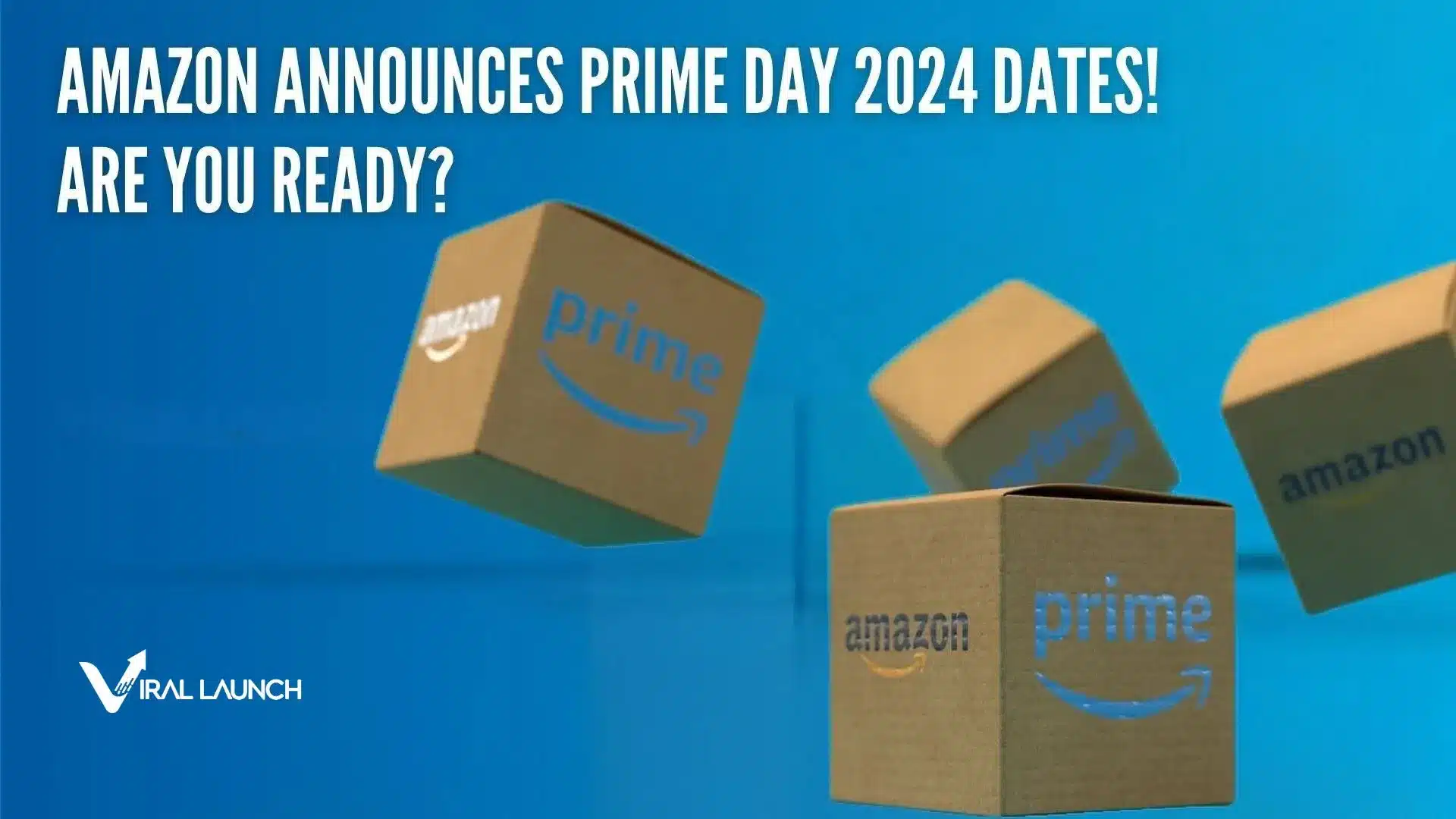One of the greatest benefits of Amazon’s immense platform is there’s more than one way to make money. From side hustles for supplemental income to starting a full-blown business and fulfilling your entrepreneurial aspirations, there are numerous ways to earn some dough through Amazon, making it accessible to aspiring entrepreneurs of all resources. One of the most popular, practical, and profitable ways is reselling items in its massive marketplace.
Since Amazon launched its third-party marketplace in 2000, it’s been a financially fruitful place to be for savvy resellers. If you’re considering entering the marketplace, buckle up and lock in as we dig into the state of reselling on Amazon as we prepare to enter a new year.
Below, we’ll dive into the topic of Amazon reselling, answering what that entails, how to become an Amazon reseller, how to make money reselling on Amazon, and tips and tricks to boost your reselling business to new heights. Consider this your Amazon reselling guide starter kit, answering the frequently asked questions about how to resell on Amazon in 2024 for new and experienced sellers.
Understanding the Basics of Amazon Reselling
From some of the largest companies in the world to artisans selling handmade goods to people looking to make some money selling used books; Amazon sellers come from remarkably diverse backgrounds. However, roughly 60% of all units sold on Amazon are sold by third-party sellers, primarily private-label sellers who purchase items from a supplier to be resold on Amazon.
With the enormous size and popularity of Amazon for e-commerce, it’s the place to be for sellers looking to maximize their chances of running a sustainably successful reselling business.
What Is Amazon Reselling and Is It Legal?
Amazon reselling refers to purchasing products from various sources and selling them on Amazon for a profit. This business model allows individuals or companies to leverage Amazon’s vast marketplace to reach a wider audience and generate revenue.
Can you resell products on Amazon? Yes, it is absolutely legal to resell products on Amazon. Of course, there are ways to get in trouble with the law if your products are illegally acquired, counterfeit, or mislabeled to mislead customers intentionally. Generally speaking, reselling items on Amazon is not only legal, but it’s also a commonly accepted part of the Amazon marketplace.
What Are the Different Types of Amazon Resellers?
Amazon offers diverse avenues for individuals and businesses to thrive in selling on Amazon, presenting several methods to make an impact in the marketplace and rack up sales. Below, we’ll list four of the most common methods of reselling used on Amazon to help you determine which sounds best to accomplish your goals.
- Retail Arbitrage: Buying from retail stores at lower prices and reselling online.
- Online Arbitrage: Purchasing from online stores to resell elsewhere.
- Wholesale: Buying in bulk directly from manufacturers.
- Dropshipping: Selling without inventory or stock.
- Private Label: Creating and selling branded products.
Depending on the source, private label selling may or may not be considered reselling, as they have more involvement than the other seller types listed above. But technically, they purchase a product for the sole purpose of reselling it for a profit.
Market Trends and Changes in 2024

Experts and analysts expect the Amazon marketplace to continue its growth pattern into 2024, with JPMorgan analysts Doug Anmuth and Bryan M. Smilek projecting Amazon to surpass Walmart as the largest retailer in the United States. They also estimate the number of Amazon Prime members globally will rise to roughly 300 million, representing an uptick of 100 million members in just three years.
This macro trend lays a formidable foundation for a healthy environment for third-party sellers and resellers to thrive. As for micro trends to watch out for, a few major points stick out as we head into the new year.
Artificial Intelligence continues to be a factor
2023 may very well be remembered as the year of artificial intelligence. As you’d suspect, Amazon stands near the forefront of integrating these technological advancements into the marketplace, with AI-generated product review summaries entering the picture in the back half of the calendar. Around the same time, Amazon announced a $4 billion investment in Anthropic, an artificial intelligence company founded by former OpenAI staffers. AI features have also been integrated into the Alexa voice assistant for more human-like interactions and generative functions.
The potential for AI is endless, with opportunities to reshape virtually every aspect of Amazon, what customers see and how shoppers shop. While Amazon has done little to announce its intentions regarding AI, it’s almost certain new tools and features will be rolled out soon.
Product research tools become even more critical
Over the past decade or so, the Amazon marketplace has evolved tremendously. Once upon a time, sellers could sell almost anything and have a decent chance of profiting. As potential sellers became aware of this e-commerce gold rush, the market became much more competitive, and product research tools became the secret weapon for success.
Since then, product research tools have gone from luxury to necessity as the need for any edge over the competition heightens. With artificial intelligence entering the picture with more customers and sales up for grabs than ever, the insights made possible by sophisticated product research tools will become as valuable as ever to gain a leg up on the competition or to maintain top positioning.
At Viral Launch, we possess the tools for every step of the Amazon selling journey, from solutions meticulously engineered to identify products with promising opportunity to the most accurate product sales and market trends around to reverse-ASIN tools that let you effectively and legally spy on your competition, you can trust Viral Launch as your all-in-one database to start and fuel your Amazon business.
Setting up Your Amazon Seller Account
Creating your Amazon Seller account is a relatively quick and easy process consisting of a few steps requiring a few legal documents.
First, visit the Seller Central Amazon login and sign-up page. Then, select the Learn More option near the top-right of the page to create your Amazon Seller Central account. You can either sign in using your Amazon customer login or create a new one. At this point, you’ll need to make your first real decision about your Amazon selling business: choosing your selling plan.
Once you’ve decided between the Professional and Individual Seller plans, you must submit items for approval.
Items Needed for Approval
In addition to the list of items required to provide below, you’ll need to be a resident of these approved countries to be eligible for seller registration without further information.
- Business email address or an existing Amazon customer account
- Internationally chargeable credit card
- Government ID (for verification purposes to protect sellers and customers)
- Tax information
- A cell phone and phone number
- Bank account information for where Amazon can send your proceeds from sales
This information is requested in a five-part signup process in which Amazon takes Business Information, Seller Information, Billing Information, Store Information, and Verification. Once you’ve selected your selling plan and provided these documents, simply wait for your approval email as you’ve completed the signup process!
How to Find Products to Resell
Finding the right product that aligns with your resources and goals is the most important thing you can do when starting an Amazon resale business. While thinking of products to launch your business can feel overwhelming, it can feel especially challenging to research these ideas and break down the numbers to simplify this weighty decision.
And like many other elements of selling on Amazon, it all starts with research. That’s why we created Product Discovery, our industry-leading tool that reverse engineers product ideas based on your selected criteria.
Within Product Discovery, you can search by category, average monthly sales, average price, keyword, average monthly review, estimated search volume, and many advanced filters gathered from years of meticulously monitoring the Amazon marketplace. As a result, you can set the criteria that match your resources and goals, and Product Discovery hunts those ideas down, delivering ideas that fit precisely what matters most for you while providing additional insights to help you make the big decision.
Not only does this save countless hours spent thinking of products or categories to enter, but it also eliminates the guesswork of finding products with opportunities with actual data from the Amazon marketplace.
Legal and Ethical Considerations
Adhering to Amazon’s policies and guidelines is crucial to maintain a good standing on the platform. Resellers must comply with Amazon’s terms of service, including rules on product authenticity, customer service standards, and prohibited items. Additionally, understanding tax obligations and any legal requirements related to the products being sold is imperative.
Inside Amazon Seller Central, you can utilize their Help section to find quick and easy answers about nearly any aspect of selling on Amazon. From setting up taxes to business licenses, Amazon simplifies and streamlines almost every step of the way during setup.
And while not illegal within the scope of the law, Amazon does restrict the sale of items from specific brands and companies. Adidas, Disney, Ray-Ban, and Panasonic are just a few brands known for being prohibited from reselling on the Amazon marketplace. However, you can submit an application on Amazon to sell these products pending approval.
Selling counterfeit or infringing on brands can lead to account suppression and suspension, effectively ending your Amazon seller journey, so be sure to stay in the clear of Amazon’s terms of service and seller guidelines.
Listing Optimization and SEO
While reselling items on Amazon circumvents certain aspects related to manufacturing, creating a compelling product listing that accounts for Amazon SEO should be considered necessary for maximum effectiveness. Once you’ve selected a product and secured it, it’s crucial to maximize visibility and ensure customers searching for your product can find it. Even the best reselling plan can and will fall flat if your Amazon product listing doesn’t stack up against the competition.
When we mention an optimized listing, we refer to the images and copy of a product listing being high quality and serving its intended purpose: to make your product appear attractive and inform customers of its features and benefits while enhancing visibility.
Product Images
Your product images should follow Amazon image requirements, be clear and high quality, and highlight your product’s unique features. We recommend a mix of white-background and lifestyle images, showcasing the product against an all-white background and pictures of the product used in ways a customer might use it.
Including as many images as Amazon allows is also recommended, as that’s precious space to convince customers to buy. Adding text in the form of infographics to inform the customer of sizing dimensions, subtle details, and use cases can be a great way to fill this space. The right mix of professional, high-quality product imagery cannot be overstated, as it’s often the first thing a customer sees about your product and influences whether the customer continues scrolling or clicks on your product to learn more.
Product Copy
As for copy, your listing should include as many high-volume and relevant keywords without keyword stuffing. When crafting copy for a listing, it’s important to remember it serves two audiences: Amazon’s algorithm that impacts where your listing appears in search and potential customers. Balancing visibility and customer appeal is key to a successful listing.
To tackle the algorithm, you’ll want to use a helpful keyword tool like Keyword Research, which gives you a comprehensive rundown of all search terms customers use to find your product. You can even sort by search volume and priority to find the most important keywords.
If you feel comfortable in your writing skills, let your inner wordsmith loose! Or, you can utilize a tool like LaunchGPT. This AI-powered, state-of-the-art tool integrates generative text with keyword insights from Amazon to craft an Amazon description in minutes that perfectly serves both audiences.
Pricing Strategies
On its surface, pricing seems impossibly simple for resellers: sell it for more than you bought it. However, there’s much more at play when putting a price on your product. In addition to the Professional or Individual Selling Plan you selected, there are selling fees to consider that come into play for profitability.
While it’s more straightforward for online arbitrage and dropshipping resellers, it can be a little tricky for others. For example, a retail arbitrage seller who goes thrift shopping for items with an acceptable margin, you’ll want to make sure whatever you sell covers the cost of the items, selling fees, and any other business costs to make sure it’s worth your time and effort.
Additionally, resellers should do as much homework as possible on the competition when determining a viable pricing strategy. Balancing profitability and competitiveness demands continuous monitoring of costs, fees, and profit margins. Striking the right balance involves meticulous pricing decisions that ensure profitability without compromising competitiveness in the fierce Amazon marketplace.
How to Manage Logistics and Fulfillment

For professional sellers who buy in bulk from a manufacturer, Amazon’s Fulfillment by Amazon (FBA) program is the engine that powers Amazon’s marketplace. FBA sellers gain access to Amazon’s global network of fulfillment centers, unlocking Amazon’s industry-leading two-day Prime shipping. This means a seller would ship their product inventory to Amazon’s warehouses, and when a customer purchases their product, Amazon fulfillment specialists pick, pack, and ship the order.
Amazon reports shipping with FBA costs 30% less per unit than standard shipping options from competing U.S. carriers and 70% less than premium options comparable to FBA while also taking care of customer service, processing returns, and providing access to their analytics and marketing dashboard.
By and large, the streamlined FBA program is the heart of the Amazon marketplace, making it possible for sellers with little experience or resources to become entrepreneurs and differentiating it from other online marketplaces like eBay, Etsy, or Shopify, so we can’t recommend it enough although there are alternatives.
Market and Promote Your Products
Once you’ve decided upon a product, created an optimized listing, and set up a streamlined logistics plan, it’s all about enhancing visibility through marketing and managing your listing to the best of your ability. You can accomplish this in a few different ways.
Building a Brand Presence on and Off Amazon
- Amazon Storefront: Create an Amazon Storefront to showcase your brand’s range of products, enabling customers to explore and engage with your offerings seamlessly.
- Social Media Engagement: Leverage social media platforms to amplify your brand’s presence. Share compelling content, engage with your audience, and drive traffic to your Amazon store or product pages.
Gathering Reviews and Improving Customer Service
- Review Generation Strategies: Implement post-purchase follow-ups like our Review Generator tool to encourage customers to leave reviews. Offer exceptional service to increase the likelihood of positive feedback.
- Responding to Feedback: Address customer reviews promptly and professionally, whether positive or negative. Engaging with customers demonstrates your commitment to satisfaction.
Enhancing Customer Service
- Fast and Reliable Shipping: Prioritize timely shipping and reliable delivery to enhance the customer experience.
- Responsive Customer Support: Offer responsive and helpful customer service, addressing queries and concerns promptly.
These strategies ensure a holistic approach to marketing, branding, and customer service, which is crucial to thriving as an Amazon reseller in 2024.
Tips to Scale Your Reselling Business on Amazon

Without getting too far ahead of yourself, it’s never too early to start thinking about your long-term approach and ways to grow your business. Below, we’ll list a few general ideas to get your wheels turning on potential moves down the road.
- Diversify Offerings: Gradually expand your product line by introducing complementary or related items. Analyze market trends and customer demands to identify viable opportunities.
- Explore New Markets: Research and consider expanding to international markets or untapped niches within your current market to broaden your reach.
Utilizing Data and Analytics for Informed Decision Making
- Data-Driven Insights: Leverage Amazon Seller Central and third-party analytics tools from Viral Launch to gather insights into sales trends, customer behavior, and competitor strategies.
- Demand Forecasting: Use data analysis to forecast demand, optimize inventory, and make informed decisions about product sourcing and marketing strategies.
Tips for Sustainable Growth and Scalability
- Focus on Efficiency: Streamline operations, optimize processes, and automate where possible to handle increased sales volume efficiently. Avoiding wasteful costs and uses of time can go a long way in growing your business without hiccups.
- Invest in Infrastructure: Scale your business infrastructure, including inventory management systems, logistics, and customer support, to accommodate growth without compromising service quality. While this can be costly initially, it could be the best investment you make into your resell business.
- Build Long-Term Partnerships: Establish strong relationships with suppliers, logistics partners, and service providers for consistent and reliable support as your business expands. Do not take their assistance for granted, and work to develop healthy communication with them, as it’ll pay off tenfold in the long run while navigating your path to Amazon success.
Implementing these strategies ensures a structured approach to scaling your Amazon reselling business, fostering sustainable growth while leveraging data-driven insights for informed decision-making.
Conclusion
In the realm of Amazon reselling, the opportunities are as vast as the marketplace itself. As we step into 2024, Amazon reselling presents immense possibilities.
From deciphering the legality and intricacies of Amazon reselling to dissecting the diverse methods and their nuances, hopefully this guide on how to resell Amazon products provides clarity regarding if this opportunity sounds right for you.
If you plan on entering the Amazon marketplace, feel free to return to this page and look around our blog for tips and tricks at every stage of selling on Amazon. With our definitive toolkit for Amazon seller success, we’ve got the data and tools to help you gain an edge over the competition.







